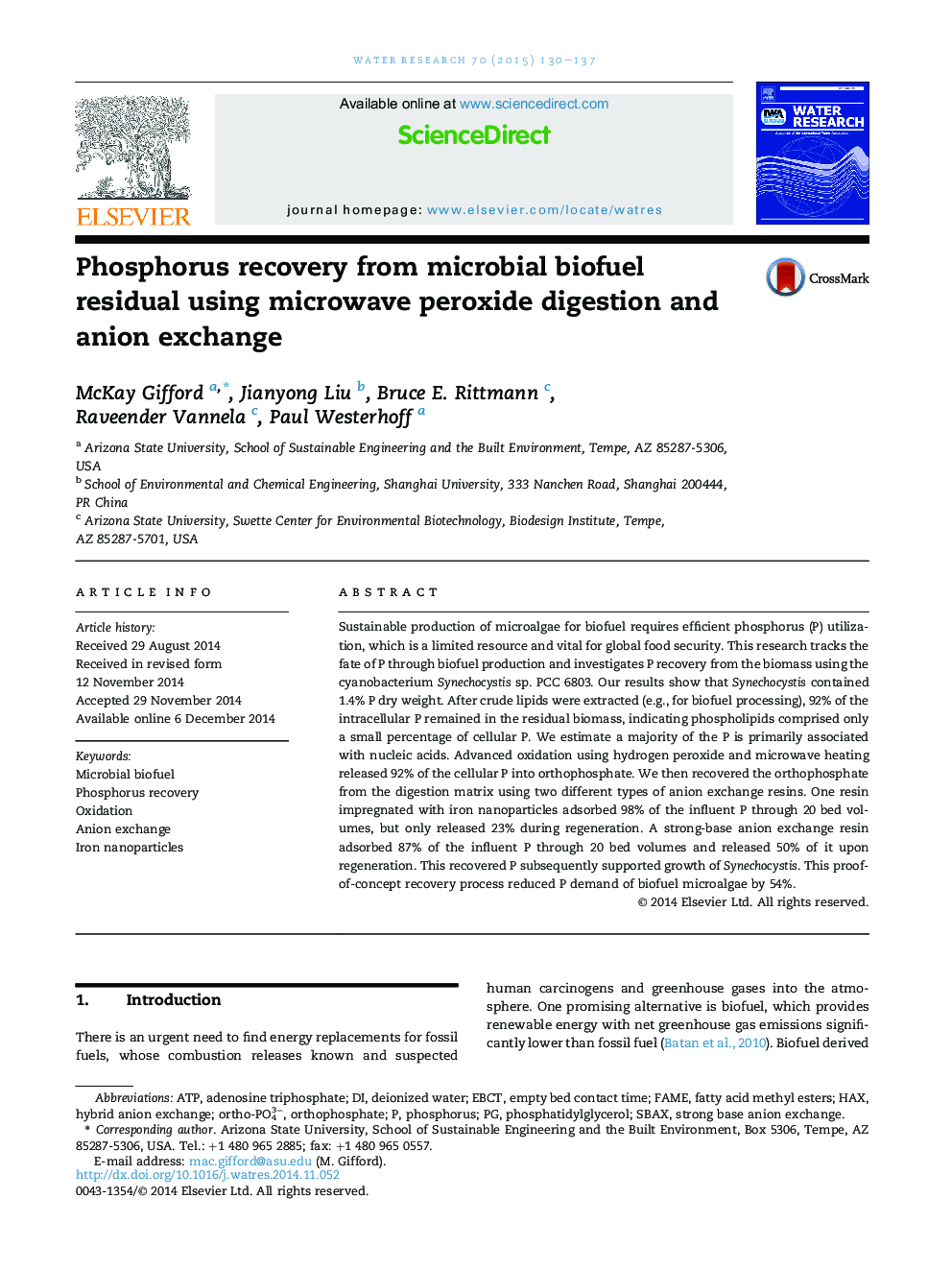| Article ID | Journal | Published Year | Pages | File Type |
|---|---|---|---|---|
| 4481299 | Water Research | 2015 | 8 Pages |
•90% of phosphorus remains in residuals after lipid processing for biofuel.•Advanced oxidation converts organic phosphorus to useful orthophosphate.•Anion exchange captures orthophosphate and releases it for reuse upon regeneration.•Recovery can reduce phosphorus demand of microalgae for biofuel by over 50%.
Sustainable production of microalgae for biofuel requires efficient phosphorus (P) utilization, which is a limited resource and vital for global food security. This research tracks the fate of P through biofuel production and investigates P recovery from the biomass using the cyanobacterium Synechocystis sp. PCC 6803. Our results show that Synechocystis contained 1.4% P dry weight. After crude lipids were extracted (e.g., for biofuel processing), 92% of the intracellular P remained in the residual biomass, indicating phospholipids comprised only a small percentage of cellular P. We estimate a majority of the P is primarily associated with nucleic acids. Advanced oxidation using hydrogen peroxide and microwave heating released 92% of the cellular P into orthophosphate. We then recovered the orthophosphate from the digestion matrix using two different types of anion exchange resins. One resin impregnated with iron nanoparticles adsorbed 98% of the influent P through 20 bed volumes, but only released 23% during regeneration. A strong-base anion exchange resin adsorbed 87% of the influent P through 20 bed volumes and released 50% of it upon regeneration. This recovered P subsequently supported growth of Synechocystis. This proof-of-concept recovery process reduced P demand of biofuel microalgae by 54%.
Graphical abstractFigure optionsDownload full-size imageDownload high-quality image (246 K)Download as PowerPoint slide
